Preparations were in full swing in February 1982 to prepare space shuttle Columbia for its third trip into space, the STS-3 mission planned for launch on March 22. At NASA’s Kennedy Space Center (KSC) in Florida, teams closed Columbia’s payload bay doors, towed it to the Vehicle Assembly Building (VAB), joined it with its external tank and solid rocket boosters, and rolled the stack out to Launch Pad 39A. Astronauts Jack R. Lousma and C. Gordon Fullerton participated in a countdown demonstration and emergency escape drill at the pad. Ground crews at the launch pad completed a cryogenic fuel loading test with Columbia’s external tank. At NASA’s Johnson Space Center (JSC) in Houston, Lousma and Fullerton took part in a long simulation of their upcoming flight with mission controllers and held a press conference.
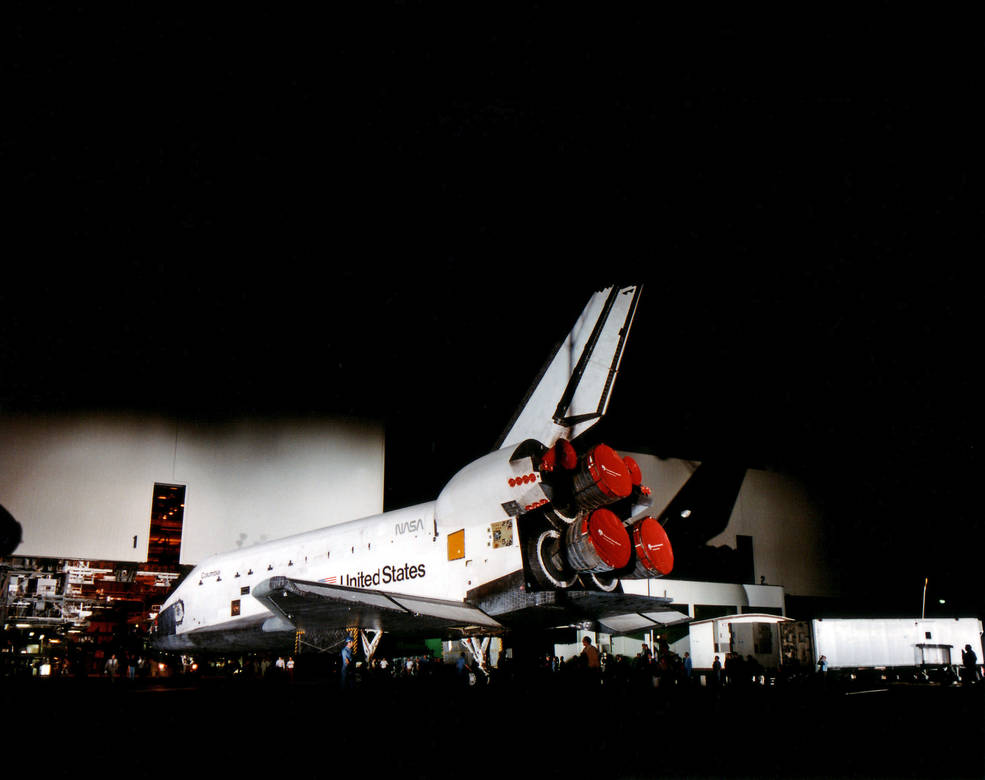
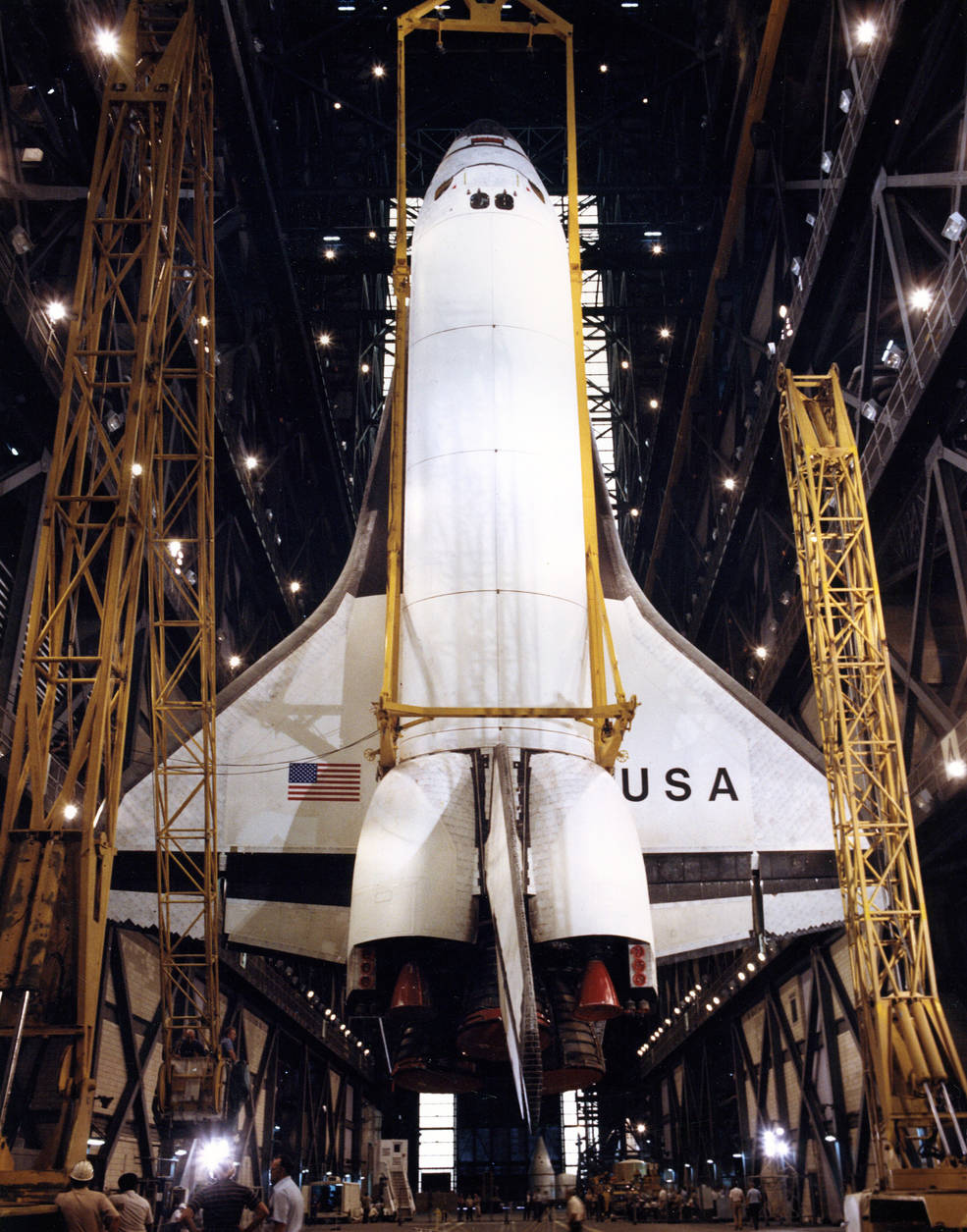
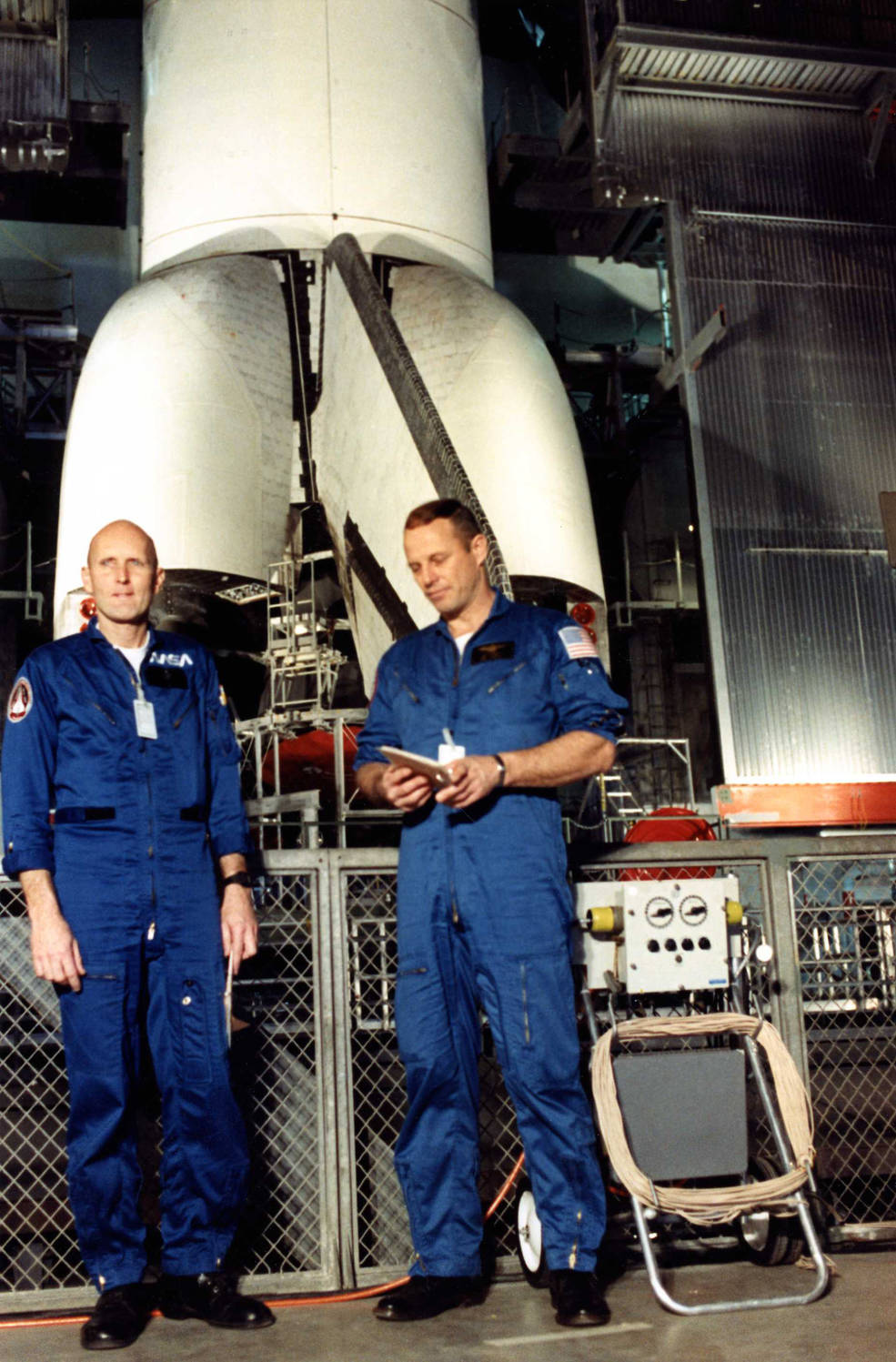
Left: Workers at NASA’s Kennedy Space Center in Florida roll space shuttle Columbia out of the Orbiter Processing Facility for the rollover to the Vehicle Assembly Building (VAB). Middle: In the VAB, workers lift Columbia to mate it with its external tank and solid rocket boosters. Right: STS-3 astronauts C.Gordon Fullerton, left, and Jack R. Lousma stand near Columbia’s tail following the interface test.
In late January 1982, after installing the mission’s payloads, workers in KSC’s Orbiter Processing Facility (OPF) closed Columbia’s payload bay doors. On Feb. 3, they backed the orbiter out of the OPF and towed it to the nearby Vehicle Assembly Building (VAB), where they mated it with the external tank and twin solid rocket boosters, previously stacked on a mobile launch platform. Engineers began running tests on the integrated vehicle. Lousma and Fullerton participated in the vehicle integrated test on Feb. 12 from Columbia’s flight deck.
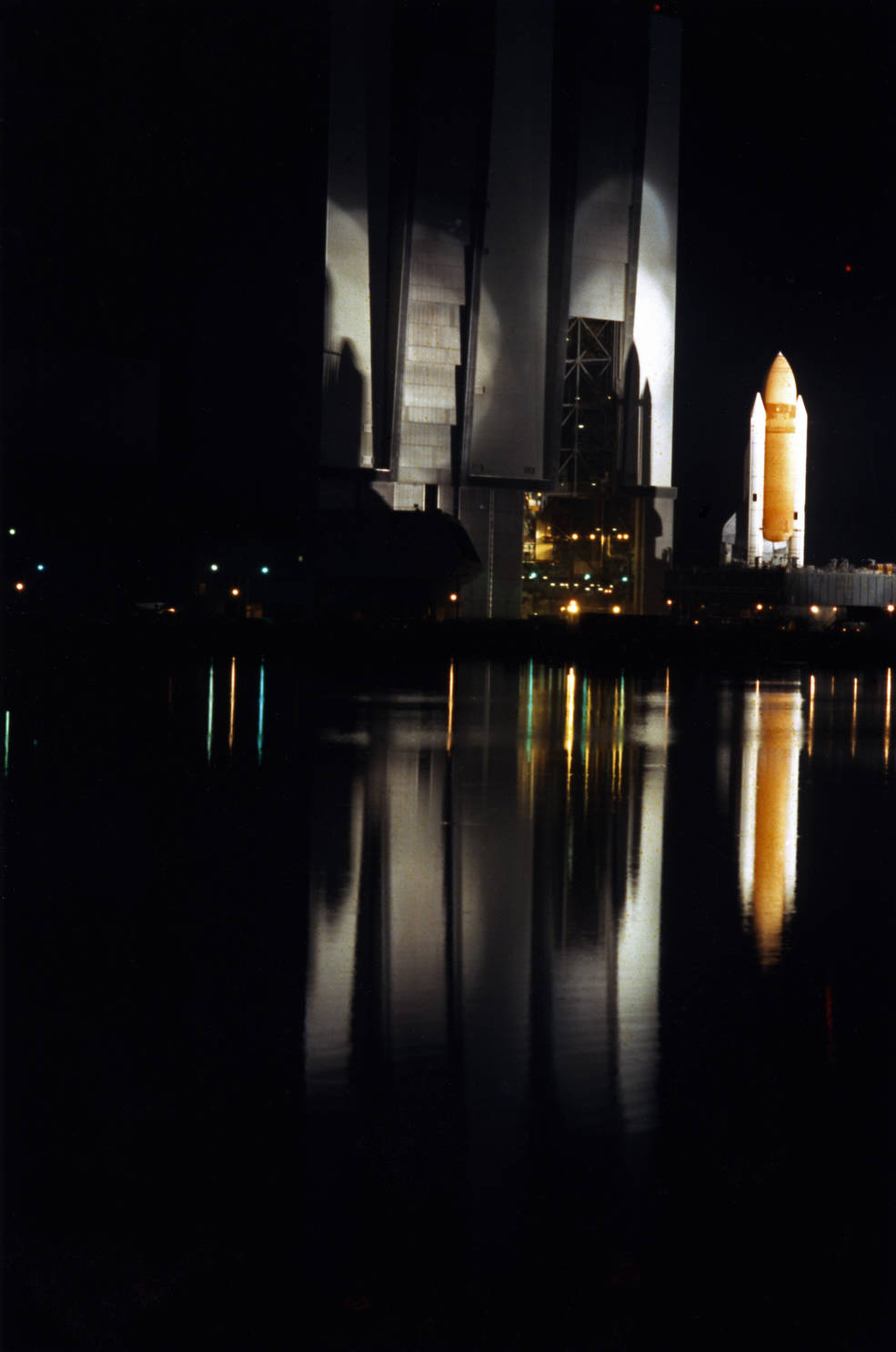
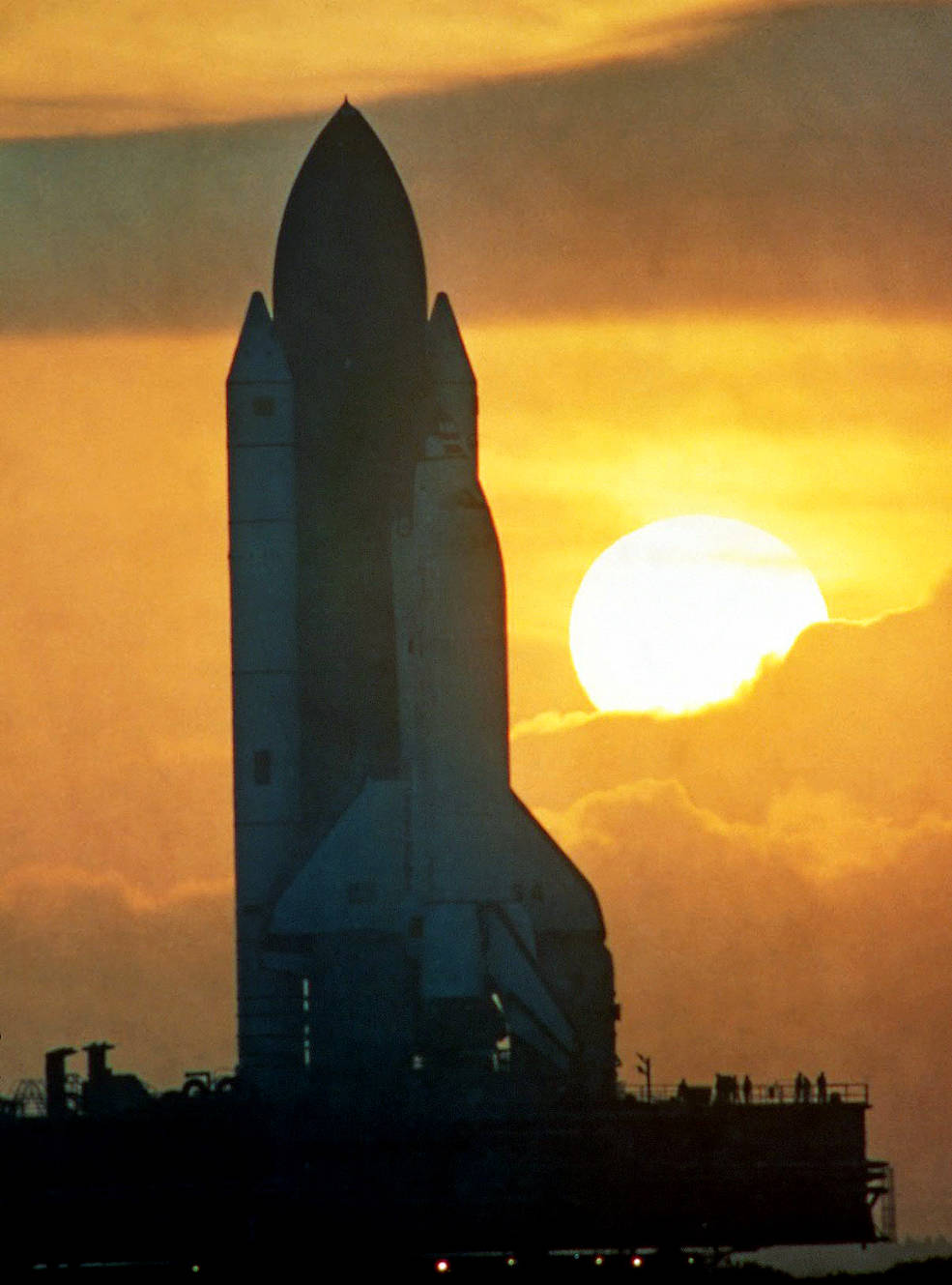
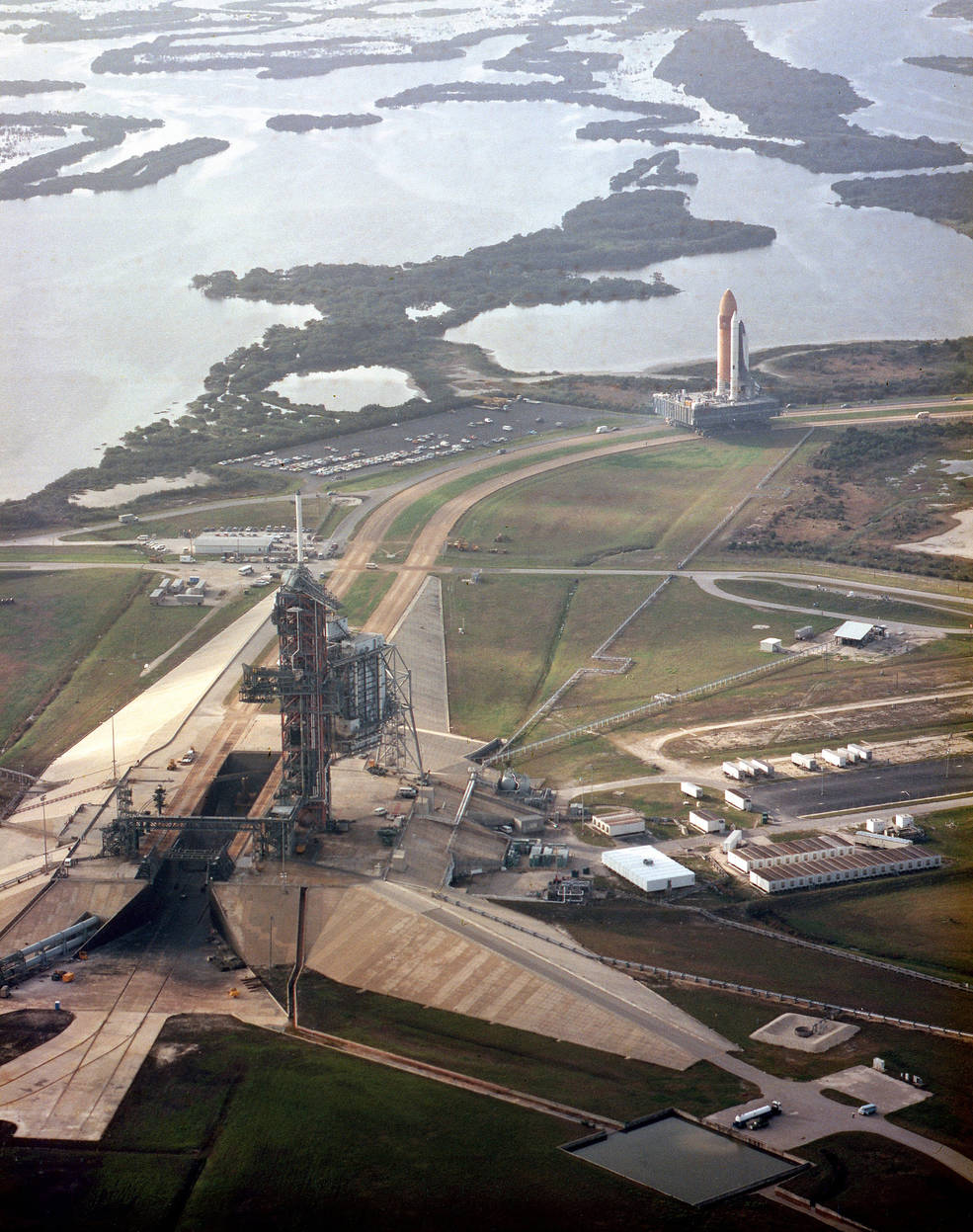
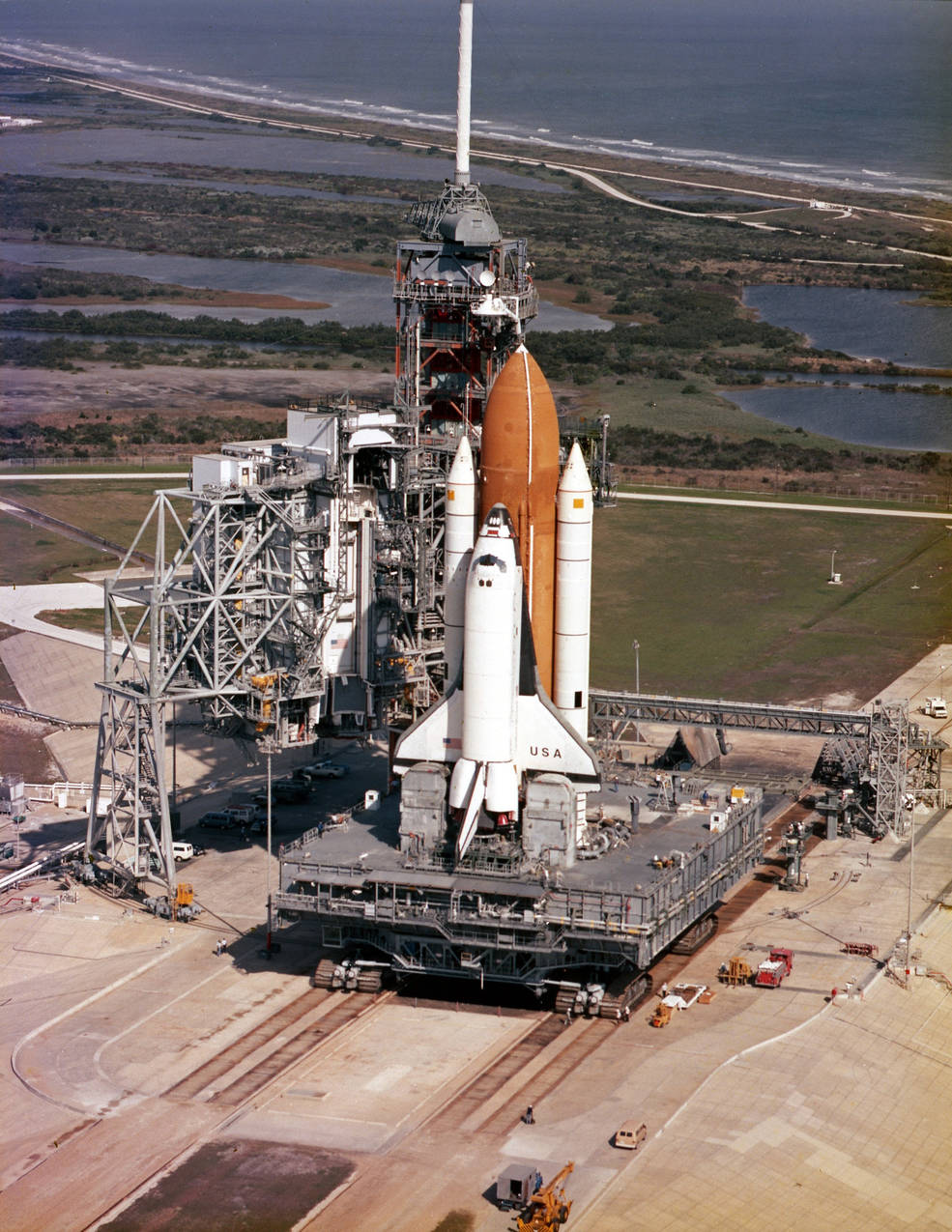
Left: Space Shuttle Columbia exits the Vehicle Assembly Building at the start of the rollout to Launch Pad 39A. Middle left: The Sun rises behind Columbia during the rollout to the pad. Middle right: Columbia approaches the pad. Right: Nearly there – Columbia approaches its final position on Launch Pad 39A.
In the predawn hours of Feb. 16, the crawler transporter carrying space shuttle Columbia atop the mobile launch platform began its slow move out of the VAB toward Launch Pad 39A, 3.5 miles away. Six hours later, the stack arrived at the pad, where workers began interface tests with launch tower. The lessons learned during the previous turnaround between STS-1 and STS-2 made for a shorter and better turnaround for the third mission. For example, Columbia spent 103 days in the OPF after STS-1, but only 47 days after the second mission. Similarly, the time in the VAB lasted 21 days after the first mission, but only 11 after STS-2. Significantly, only 449 heat shield tiles needed replacing after the second mission, compared with 1,872 after the first.
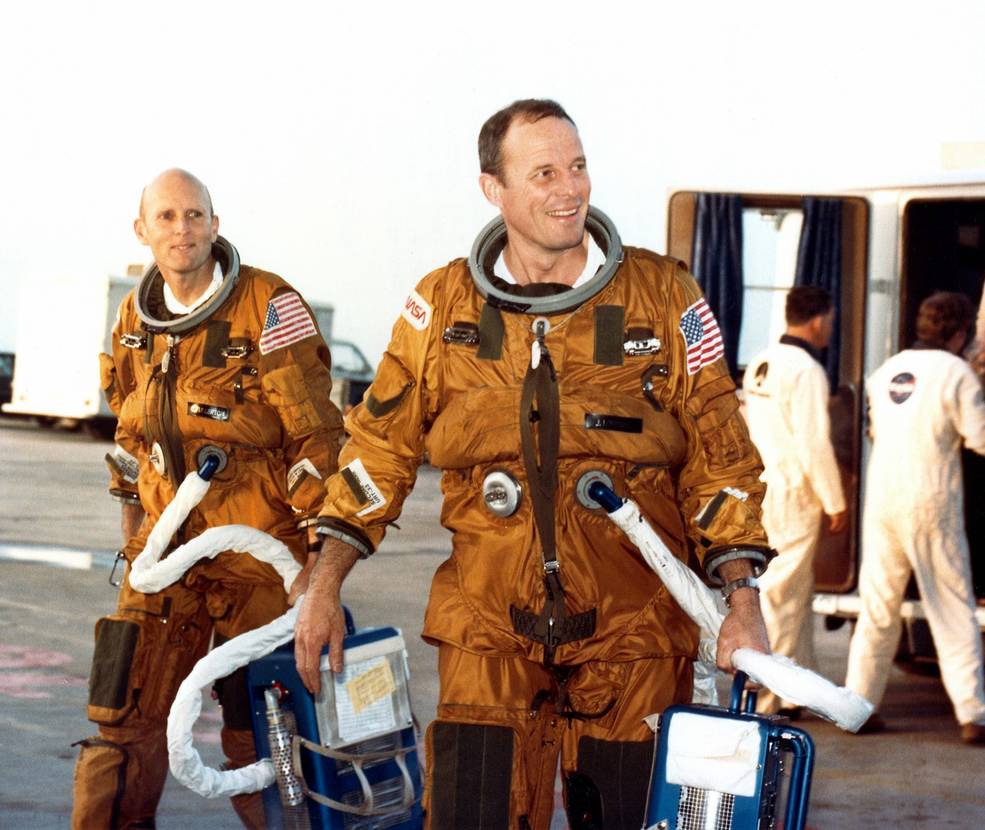
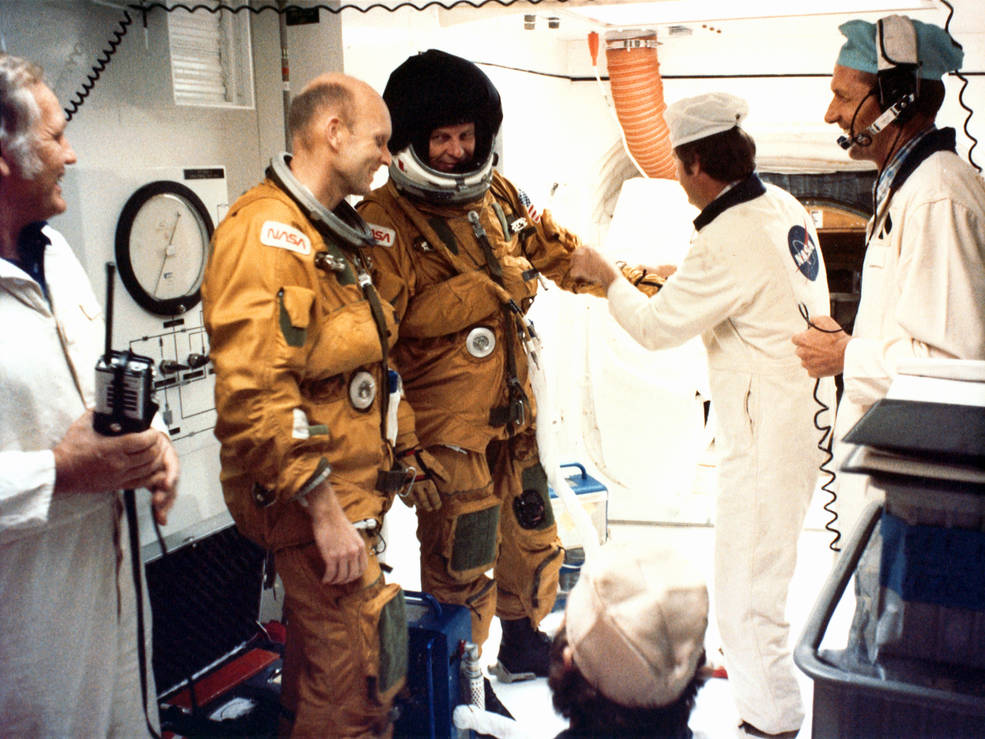
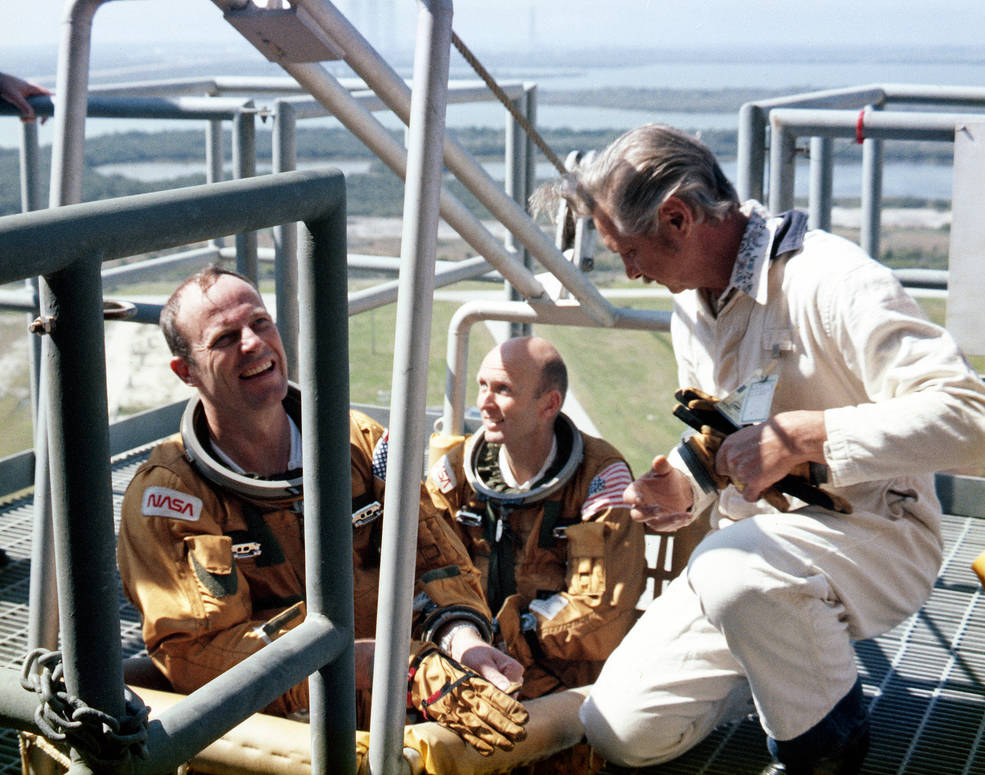
Left: STS-3 astronauts C. Gordon Fullerton, left, and Jack R. Lousma arrive at Launch Pad 39A for the countdown demonstration test. Middle: In the White Room, technicians assist Fullerton, left, and Lousma to board Columbia for the countdown test. Right: Lousma, left, and Fullerton receive instruction on the use of the emergency slide wire escape system at Launch Pad 39A.
Three days later, Lousma and Fullerton participated in the final two hours of a 33-hour countdown demonstration test. They donned their pressure suits, rode out to the pad, and climbed aboard Columbia just as they would on launch day, although no fuel was loaded in the external tank. The practice countdown continued down to the time of space shuttle main engine ignition. At the conclusion of the test, Lousma and Fullerton received instruction in the pad’s emergency escape system, including the slide wire basket. The last major test of the shuttle system, the cryogenic load, involved filling the external tank with super cold liquid hydrogen and liquid oxygen. Engineers successfully completed the test on Feb. 25.
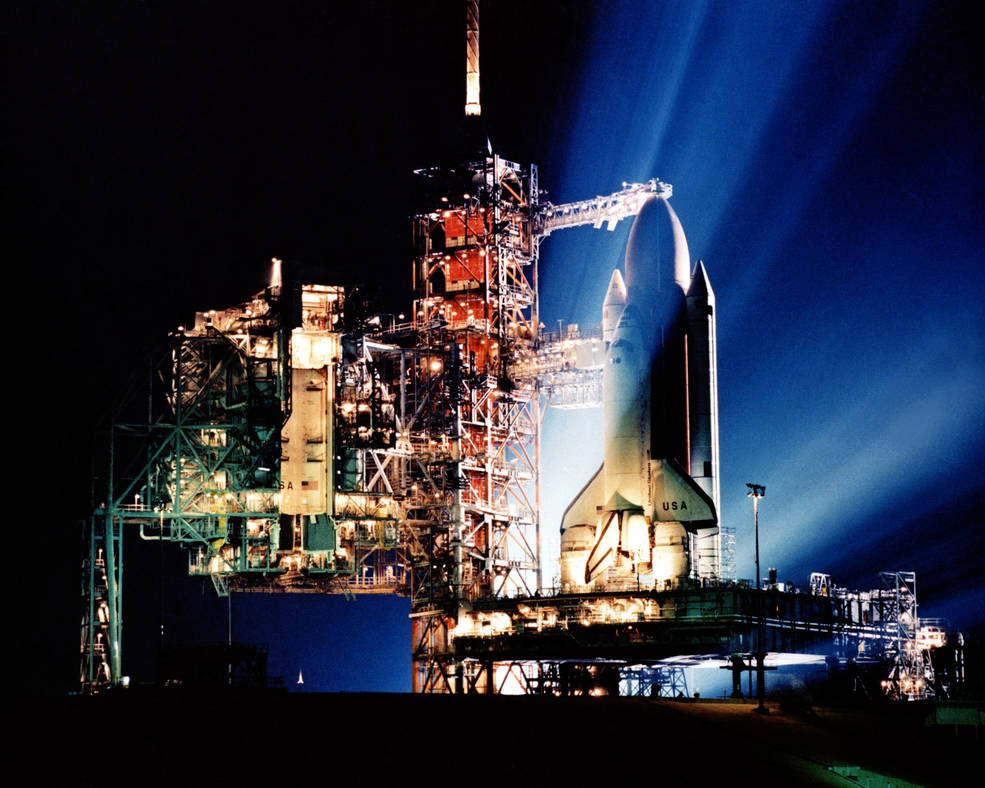
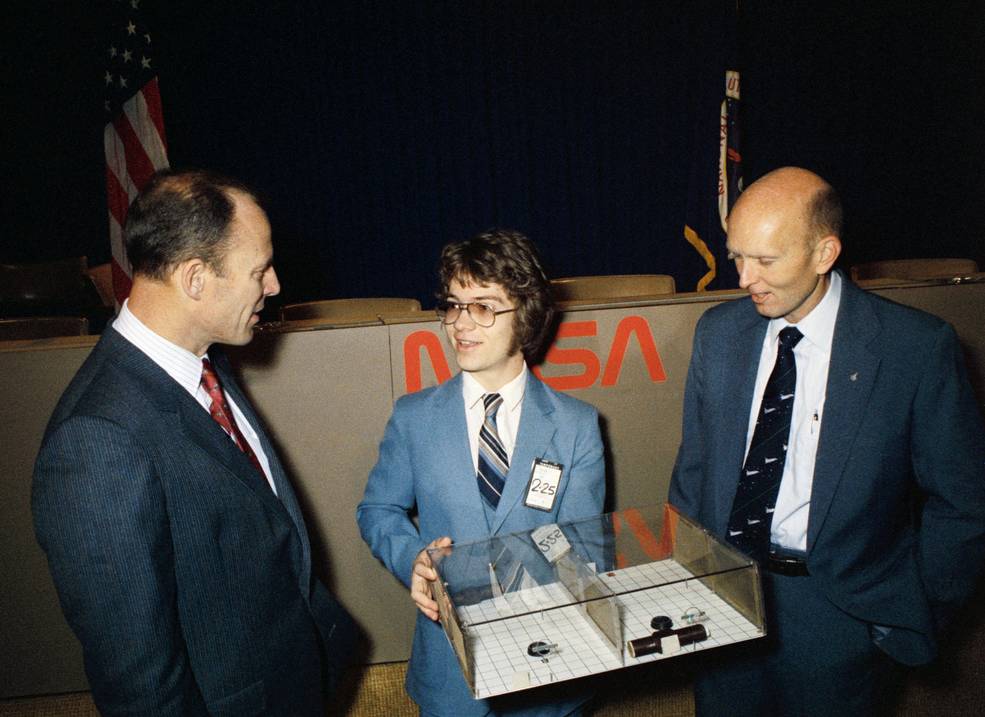
Left: Space Shuttle Columbia on Launch Pad 39A during the cryogenic fuel loading test. Right: Student Todd E. Nelson, center, demonstrates his experiment to STS-3 astronauts Jack R. Lousma, left, and C. Gordon Fullerton following their preflight crew press conference.
At JSC, Lousma and Fullerton participated in a 57-hour long simulation of their mission, ending on Feb. 5. They, along with the backup crew of Thomas K. “TK” Mattingly and Henry W. “Hank” Hartsfield, participated from the shuttle mission simulator in Building 5 while flight controllers were on console in the Mission Control Center in Building 30. The timeline of the simulation included many of the robotic operations with the cargo bay payloads. On Feb. 26, Lousma and Fullerton met the press for a preflight news conference. In addition to discussing their mission’s primary objectives and payloads, they also introduced the Insects in Flight Motion Study, an experiment designed by Todd E. Nelson, from Rose Creek, Minnesota. A senior from Southland Public School in nearby Adams, Nelson was selected to participate in the Shuttle Student Involvement Project for Secondary Schools, a joint program between NASA and the National Science Teachers Association. The experiment, to be carried aboard STS-3, aimed to study the flying behaviors of velvetbean caterpillar moths and honeybee drones in weightlessness.
To be continued…
World events in February 1982:
February 1 – “Late Night with David Letterman” debuts on NBC, with comedian Bill Murray as guest.
February 25 – Final episode of “The Lawrence Welk Show” airs.


























